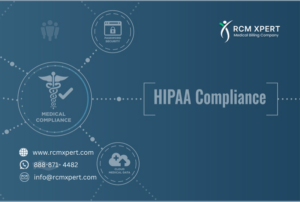Have you ever experienced that sudden, sharp pain in your chest and wondered what it could mean? Or maybe you’re a healthcare provider trying to navigate the complex world of medical coding? Either way, you’ve come to the right place. In this comprehensive guide, we’ll dive deep into the ICD-10 code R07.9 for chest pain, exploring what it means, when to use it, and why it matters. So, let’s get started on this journey through the heart of medical coding!
What is ICD-10?
Before we jump into the specifics of chest pain coding, let’s take a moment to understand what ICD-10 is all about.
The Basics of ICD-10
ICD-10 stands for the International Classification of Diseases, 10th Revision. It’s a standardized system used worldwide to classify and code all diagnoses, symptoms, and procedures in healthcare settings. Think of it as a universal language that helps healthcare providers, insurance companies, and researchers communicate effectively about medical conditions.
Why ICD-10 Matters
You might be wondering, “Why should I care about these codes?” Well, here’s why:
- Accurate billing: Proper coding ensures that healthcare providers bill correctly for their services.
- Better patient care: Precise coding helps in tracking patient histories and treatment outcomes.
- Research and statistics: These codes are crucial for medical research and public health statistics.
Understanding Chest Pain ICD-10 Code R07.9
Now that we’ve got the basics down, let’s focus on the star of our show: ICD-10 code R07.9.
What Does R07.9 Mean?
R07.9 is the ICD-10 code for “Chest pain, unspecified.” But what does that really mean?
● R: This letter indicates that the code falls under the category of “Symptoms, signs and abnormal clinical and laboratory findings, not elsewhere classified.”
● 07: This number specifies that we’re dealing with pain in the throat and chest.
● 9: The final digit indicates that this is an unspecified type of chest pain.
When to Use R07.9
Healthcare providers use R07.9 when a patient presents with chest pain, but the cause isn’t immediately clear. It’s essentially a placeholder code until more specific information is available.
Types of Chest Pain and Their Codes
While R07.9 is a catch-all code for unspecified chest pain, there are more specific codes for different types of chest pain. Let’s explore some of them:
- R07.1: Chest pain on breathing (pleurodynia)
- R07.2: Precordial pain (pain in the front of the chest)
- R07.81: Pleurodynia (sharp chest pain, often worsened by breathing)
- R07.82: Intercostal pain (pain between the ribs)
- R07.89: Other chest pain
Why Specificity Matters
You might be thinking, “Why bother with all these specific codes?” Here’s why it’s important:
- Accurate diagnosis: Specific codes help pinpoint the exact nature of the chest pain.
- Appropriate treatment: Different types of chest pain may require different treatments.
- Better data: Specific codes provide more detailed information for research and analysis.
Diagnosing Chest Pain: Beyond the Code
While the ICD-10 code is important, it’s just one piece of the puzzle. Let’s look at how healthcare providers diagnose the cause of chest pain.
Common Diagnostic Tools
- Physical examination: A doctor will listen to your heart and lungs and check for areas of tenderness.
- ECG (Electrocardiogram): This test checks the electrical activity of your heart.
- Blood tests: These can check for signs of a heart attack or other conditions.
- Chest X-ray: This can show problems with your lungs, heart, or blood vessels.
- CT scan: For a more detailed look at your chest structures.
From R07.9 to a Specific Diagnosis
Remember, R07.9 is often used as an initial code. As more information becomes available, the code may change to reflect a more specific diagnosis. For example:
● I20.9: Angina pectoris, unspecified
● J98.4: Other disorders of lung (for some types of lung-related chest pain)
● M54.6: Pain in thoracic spine (for musculoskeletal chest pain)
The Importance of Proper Coding
You might be wondering, “Does it really matter if we use R07.9 or a more specific code?” The answer is a resounding yes!
Why Proper Coding Matters
- Accurate billing: Insurance companies may require specific codes for reimbursement.
- Quality of care: Precise coding helps in tracking treatment effectiveness.
- Legal protection: Accurate codes can protect healthcare providers in case of audits or legal issues.
- Research accuracy: Specific codes provide more valuable data for medical research.
Common Causes of Chest Pain
While R07.9 doesn’t specify a cause, it’s helpful to understand some common reasons for chest pain:
- Cardiac causes:
○ Heart attack
○ Angina
○ Pericarditis
- Respiratory causes:
○ Pneumonia
○ Pleurisy
○ Pulmonary embolism
- Gastrointestinal causes:
○ Acid reflux
○ Esophageal spasm
○ Gallbladder issues
- Musculoskeletal causes:
○ Costochondritis
○ Muscle strain
- Psychological causes:
○ Anxiety
○ Panic attacks
When to Seek Immediate Medical Attention
While we’re on the topic of chest pain, it’s crucial to know when to seek immediate medical help. Don’t wait to get checked out if you experience:
- Severe chest pain or pressure
- Pain spreading to your jaw, left arm, or back
- Sudden onset of shortness of breath
- Nausea or vomiting along with chest pain
- Dizziness or fainting
Remember, it’s always better to be safe than sorry when it comes to chest pain!
Coding Challenges and Best Practices
Coding for chest pain can be tricky. Here are some challenges and best practices:
Challenges in Coding Chest Pain
- Nonspecific symptoms: Chest pain can be vague and hard to pin down.
- Multiple possible causes: It’s not always clear what’s causing the pain initially.
- Changing diagnoses: As more information becomes available, the diagnosis (and code) may change.
Best Practices for Healthcare Providers
- Document thoroughly: The more detail in the medical record, the easier it is to code accurately.
- Use the most specific code possible: If you know the cause of the chest pain, use that specific code.
- Update the code: As you gather more information, update the code from R07.9 to a more specific one.
- Consult coding experts: When in doubt, consult with coding specialists for the most accurate coding.
The Future of Chest Pain Coding
As medical knowledge advances, so does the world of medical coding. Here’s what we might see in the future:
- More specific codes: Future versions of ICD may include even more detailed codes for different types of chest pain.
- Integration with AI: Artificial intelligence might help suggest appropriate codes based on medical records.
- Real-time coding: We might see systems that update codes in real-time as diagnoses are made.
Conclusion: Decoding Chest Pain
And there you have it – a comprehensive guide to chest pain ICD-10 code R07.9 and beyond. From understanding what the code means to exploring the intricacies of chest pain diagnosis and coding, we’ve covered a lot of ground.
Remember, while R07.9 is a useful code for unspecified chest pain, the goal is always to arrive at the most specific diagnosis possible. Whether you’re a healthcare provider navigating the world of medical coding or a patient trying to understand your medical records, understanding these codes can help you make sense of the complex world of healthcare.
So the next time you encounter R07.9, you’ll know it’s not just a random string of characters – it’s a key to understanding and managing chest pain. Here’s to clearer communication and better healthcare for all!














